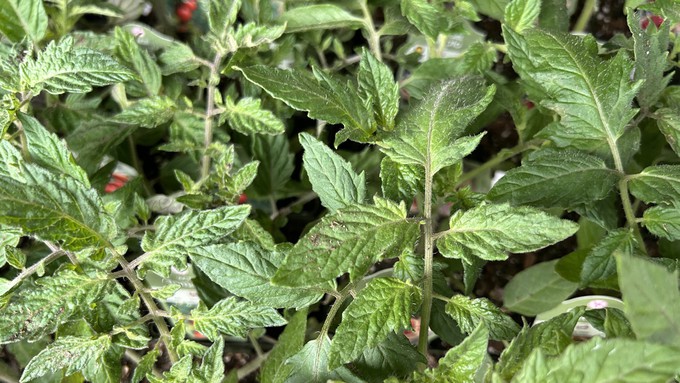
Wait until April before putting tender summer transplants in the ground

They're out there in the nurseries, and they're enticing, but ... if you buy tomato plants this size now, don't put them in the ground just yet. Kathy Morrison
This is spring fever, Sacramento-style. As soon as afternoons warm into the 70s, gardeners rush to the nearest nursery to buy their favorite seedlings – tomatoes!
That weekend has arrived, with both Saturday and Sunday comfortably in the 70s (and a lot less windy).
It’s OK to buy tomato seedlings now; just don’t plant them in the ground yet.
According to the National Weather Service, Sacramento will enjoy high temperatures in the mid 70s through the first official day of spring Tuesday, March 19. Later in the week, this warm wave will cool back into the 60s – with the possibility of more rain next weekend.
And there’s the rub: It feels warm but not warm enough. Overnight lows are chilly, too, dipping each night to 50 degrees or colder. Those conditions keep soil temperatures on the cool side.
That’s the real issue: Soil temperature – not air temperature – is key to early tomato success. Tomato roots need soil temperatures above 60 degrees, preferably 65 to 70, say master gardeners and university research. Without warm soil (and cozy roots), tomato transplants just sit there and sulk.
Planting in too-cold soil actually can hamper the plant for its entire life, say the experts.
Friday’s local soil temperature: 54.4 degrees.
Judging by the long-range weather forecast, we likely won’t see soil temperatures consistently above 60 degrees for at least two more weeks; 65 and up, four weeks or more.
After Wednesday, only one more day in March is predicted to be over 70 degrees. In that same time period, the Sacramento forecast calls for six days of rain. That’s actually normal for March in Sacramento.
So, wait on tomato planting – at least in the ground.
Instead, transplant tomato seedlings into 1-gallon black plastic pots with a good planting mix. The plastic absorbs heat and warms the soil inside the pots. That gives the seedlings a valuable head start and lets them form healthy root balls before going into the ground.
In late April, transplant the larger tomato plants – root ball and all – into the garden. They’ll be healthier and grow faster than vines transplanted directly into the ground in March.
Comments
0 comments have been posted.Sacramento Digs Gardening to your inbox.
Sites We Like
Garden Checklist for week of July 21
Your garden needs you!
* Keep your vegetable garden watered, mulched and weeded. Water before 8 a.m. to reduce the chance of fungal infection and to conserve moisture.
* Feed vegetable plants bone meal, rock phosphate or other fertilizers high in phosphate to stimulate more blooms and fruiting. (But wait until daily high temperatures drop out of the 100s.)
* Don’t let tomatoes wilt or dry out completely. Give tomatoes a deep watering two to three times a week.
* Harvest vegetables promptly to encourage plants to produce more. Squash especially tends to grow rapidly in hot weather. Keep an eye on zucchini.
* Pinch back chrysanthemums for bushy plants and more flowers in September.
* Remove spent flowers from roses, daylilies and other bloomers as they finish flowering.
* Pinch off blooms from basil so the plant will grow more leaves.
* Cut back lavender after flowering to promote a second bloom.
* It's not too late to add a splash of color. Plant petunias, snapdragons, zinnias and marigolds.
* From seed, plant corn, pumpkins, radishes, winter squash and sunflowers.